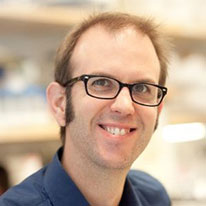
Eric M. Pietras, PhD, shows that inflammation leads to an imbalanced blood system.
This results in overproduction of aggressive immune cells capable of severely damaging tissues. Elevated
«Inflammation evolved to function for very short periods of time, marshaling resources to fight infections and repair damaged tissue. However, over long periods of time, these conditions become very toxic," says Eric M. Pietras, PhD, investigator at the University of Colorado Cancer Center and assistant professor at the CU School of Medicine Blood Cancer & BMT Program. Pietras performed the work as a postdoctoral researcher in the lab of Emmanuelle Passegué, PhD, professor at the Eli and Edythe Broad Center of Regenerative Medicine and Stem Cell Research at the University of California San Francisco.
«If you’re working under a constant state of emergency, you become stressed and less effective. I think of blood stem cells in the same way," Pietras says. While
Specifically, HSCs are sensitive to the amount of
«They’re receiving a signal telling them they need to keep building myeloid cells and as a result they don’t make the other blood cells you need. You can end up with too few red blood cells, reducing the body’s ability to deliver oxygen to cells. Or we see decreased production of new lymphoid cells, leaving the system potentially immunodeficient. These are all common features of chronically inflamed and even aged blood systems," Pietras says.
Another major question was whether these effects are reversible, in other words, once an HSC has «learned» to overproduce myeloid cells, can it just as readily unlearn this function? The question has major implications for patient care, for example in the case of bone marrow stem cell transplant. For many years, bone marrow transplant has been used to treat leukemias by removing a patient’s blood system and replacing it with that of a compatible donor.
However, «Our results show that not only should we be looking for markers of blood system compatibility, but we may also want to explore whether a potential donor’s stem cells have been exposed to inflammation and may not be as effective at rebuilding the patient’s blood system," Pietras says. «Likewise, the presence of inflammation in the individual receiving the bone marrow could also be an important factor in how well the stem cells regenerate a new blood system once they are transplanted.»
Pietras also points out increased interest in «autologous» stem cell transplants to potentially treat autoimmune diseases and multiple myeloma, another type of leukemia. In this technique, a patient’s healthy blood stem cells are removed and expanded. Components of the blood system responsible for the disease condition are killed and then the patient’s original stem cells are reinfused and encouraged to regrow a new blood system. However, this approach would not be ideal if the original blood stem cells retained «injuries» that left them predisposed toward building a blood system that is imbalanced by the insult of chronic inflammation.
To test the durability of the
«Our data suggest that it is possible to turn back the clock and reverse the effects of chronic inflammation on blood stem cells, perhaps using therapies already available in the clinic to block inflammatory signals such as
Overall, the study demonstrates for the first time that blood stem cells adapt to meet what they recognize as the body’s needs, and that chronic inflammation can act like a thumb on the scale, implying a need that does not really exist.
«For decades we have recognized the importance of these bone marrow stem cells in dealing with crisis while also maintaining the stability of the blood system. Now we show that conditions in the rest of the body can have profound implications for how stem cells behave, both in the blood and likely in many other tissues as well," Pietras says.
Source: http://www.coloradocancerblogs.org/chronic-inflammation-obesity-autoimmune-cancer-risk/


